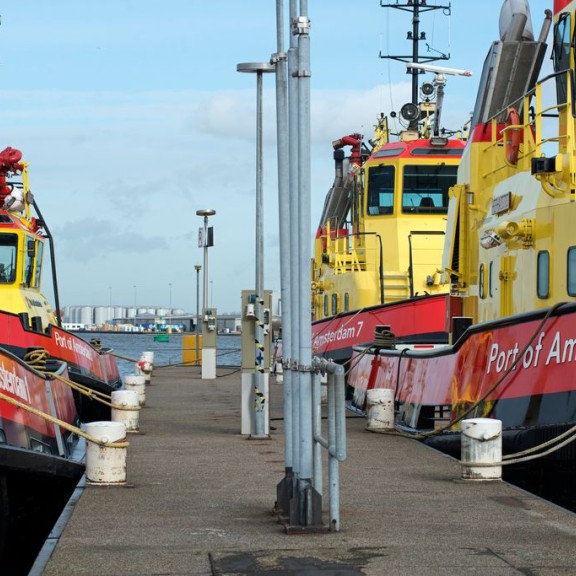
Port of Amsterdam Achieves CO₂ Reduction Target
Port of Amsterdam has achieved its CO₂ reduction target. The Port of Amsterdam aimed to reduce its corporate CO₂ emissions by 65% by 2025 compared to 2014 levels — and this goal has been met. Several initiatives contributed to this achievement: some of our locations are now off natural gas, patrol vessels have been made more sustainable and now run on greener fuels, our travel policy has been revised, company cars are electric, and a new expense reporting system has been introduced, giving us better insight into the CO₂ emissions associated with our travel.
Carbon neutral by 2030
Our next goal is to be carbon neutral by 2030, and we're well on on track to achieving it. This target covers what is known as ‘scope 1 and 2’ emissions — meaning emissions resulting from the use of fossil fuels and electricity for our own buildings, vehicles, and vessels. Our 2050 goal is to reduce our scope 3 emissions to net zero as well. These include emissions released during, for example, quay construction (procurement processes) and emissions resulting from our purchasing policies. We’re aware that we haven’t yet identified all emission sources. That’s why we’re using 2025 to gain the best possible insight into this data.
Compensation
For now, the focus remains on reducing CO₂ emissions, but ultimately, some emissions will be unavoidable due to the difficulty of reducing them. Take, for example, the office buildings used by the Port of Amsterdam that we do not own. That’s why our goals refer to being ‘net zero’ or ‘net carbon neutral’ — because, as a company, it’s not possible to operate entirely without CO₂ emissions. So what do we do with the remaining emissions? If, in addition to reducing emissions, we also choose to offset them, how do we plan to do that? These are the questions we’re currently addressing in a comprehensive Action Plan.
C02 Reduction program
Making our own organization carbon neutral is one of the three pillars of the CO₂ Reduction Program. In addition, we focus on two other areas: reducing emissions from shipping and reducing emissions from industry in the port.
Shipping
We are actively implementing the Port of Amsterdam’s Clean Shipping Vision. Reducing CO₂ emissions is one of the key focus areas — and this often goes hand in hand with reducing other harmful emissions. The International Maritime Organization (IMO) has set the ambition of bringing international shipping emissions down to net zero around the year 2050. Our Clean Shipping Vision aims even higher: a shipping sector that is entirely emission-free by 2050 at the latest. In the port, we are focusing on the availability and use of sustainable maritime fuels, emission-reducing technologies (such as shore power), rewarding front-running sustainable vessels through incentives, and ensuring efficient port operations for shipping.
Industry
The ten most energy-intensive companies are responsible for a significant share of all emissions in the port area.
Together with these companies and the City of Amsterdam, we are working to reduce these emissions. The goal is for all companies in the port to have net-zero scope 1 and 2 greenhouse gas emissions by 2050 at the latest, and to actively work on minimizing their scope 3 emissions. Greater availability of electricity and access to hydrogen are crucial to achieving this.
We are also developing a CO₂ value chain in the port, with projects focused on carbon capture, storage, and reuse.